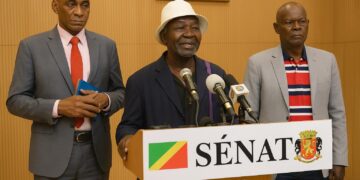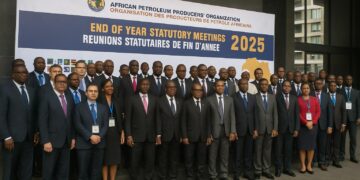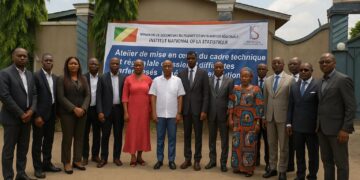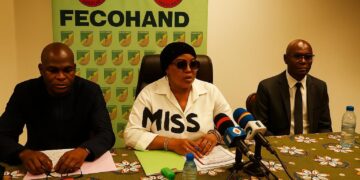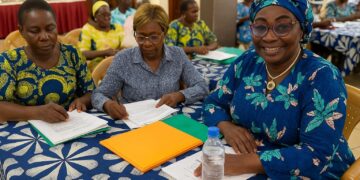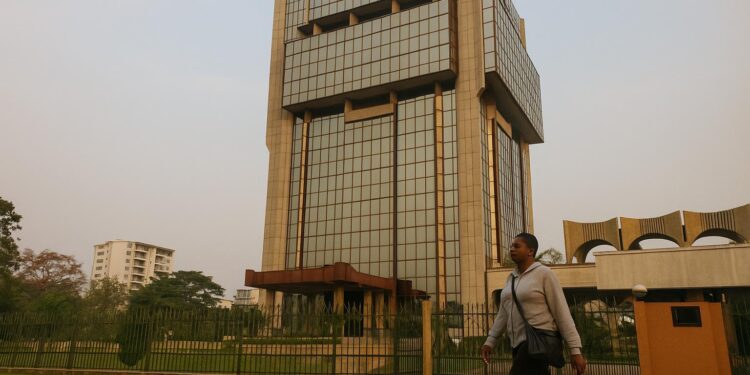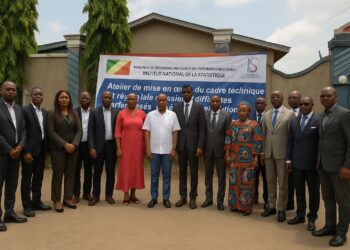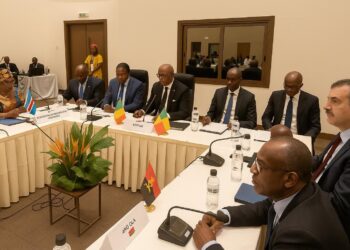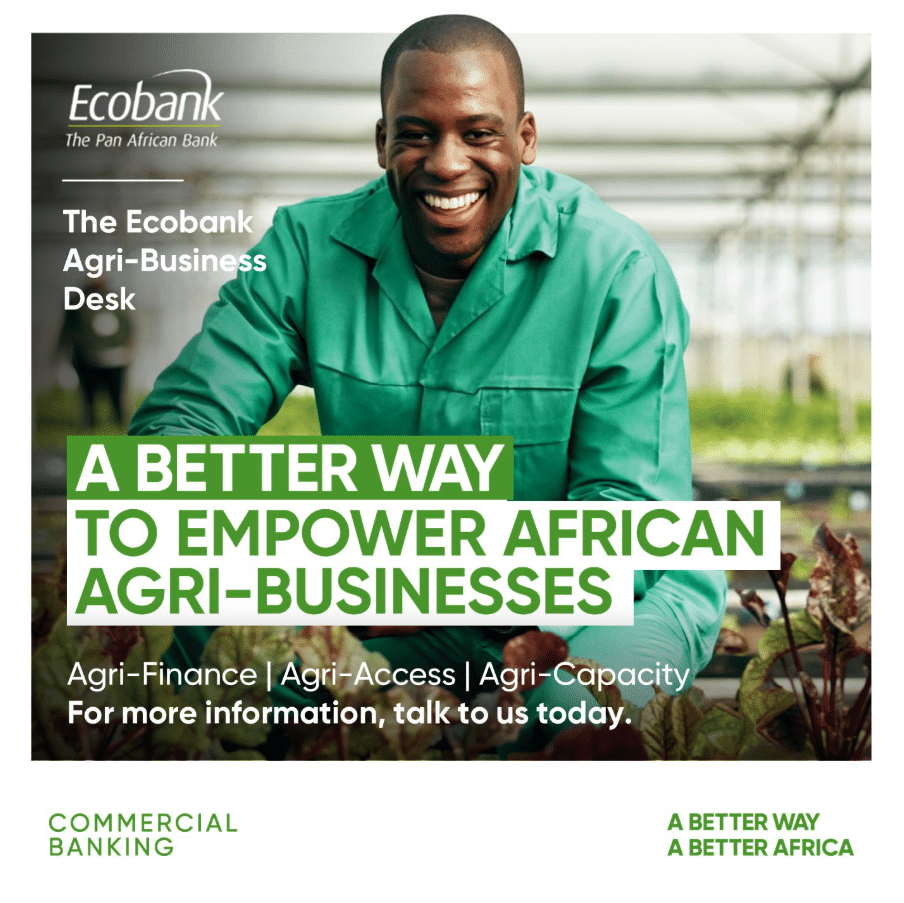BEAC chooses Dolisie for its next agency
The Bank of Central African States, the common issuer for CEMAC, has confirmed a new agency in Dolisie, the dynamic capital of Niari. Three hectares allocated by the Ministry of State Property now await groundbreaking, following a symbolic hand-over on 8 November (BEAC press release, 8 Nov 2023).
A fourth footprint in Congo-Brazzaville
The Dolisie office will complement the national directorates in Brazzaville and Pointe-Noire and the agencies of Ouesso and Oyo. By extending coverage toward the southwest, the institution aims to reduce logistical costs and processing times for cash movements inside the country.
Design inspired by regional banking standards
According to preliminary sketches, the building will rise in the city centre near the municipal garage. It will host grade-A offices, high-spec meeting rooms, a modern staff restaurant and secure cash-handling vaults, reflecting BEAC’s regional programme to upgrade its physical infrastructure.
Supporting treasury and public-finance operations
Treasury agents in Niari currently travel hundreds of kilometres to Brazzaville for settlement services. The new agency will allow tax, customs and budget departments to reconcile payments locally, improving the traceability of public revenue and accelerating transfers to the central account.
Boosting liquidity for banks and micro-finance
Commercial banks operating in Niari and neighbouring Kouilou rely on cash trucks from Pointe-Noire. The Dolisie vault will shorten supply chains, helping lenders manage peaks in demand linked to cocoa harvests, timber exports and public-sector payroll cycles, analysts at FinAfrique observe.
Financial inclusion at the forefront
Only 27 percent of adults in southern Congo hold a formal account, the 2022 CEMAC Financial Inclusion Survey shows. By providing a closer refinancing window to micro-finance institutions, BEAC expects to stimulate branch openings and digital-money agents across rural corridors.
Alignment with national development strategy
The project dovetails with Congo’s 2022-2026 National Development Plan, which prioritises decentralisation of financial services and improved business climate. Minister Pierre Mabiala underlined that situating a high-profile monetary asset in Niari reinforces government efforts to diversify growth beyond hydrocarbons.
Construction timeline and budget
Sources close to the steering committee indicate that tender documents will be released in early 2024, with groundbreaking targeted for the third quarter. Budget envelopes are still confidential, yet comparable agencies in Oyo and Ouesso cost roughly XAF 6–7 billion each, according to BEAC records.
Environmental and social safeguards
The central bank intends to certify the building under EDGE green-building standards. Solar panels, rain-water harvesting and ergonomic workspaces feature in the concept note circulated to potential contractors, illustrating BEAC’s commitment to lower operating costs and carbon footprint.
Local employment and skill transfer
During construction, up to 250 jobs could be created for engineers, quantity surveyors and skilled workers. BEAC’s human-resources department plans to partner with the Dolisie Vocational Institute so that apprentices receive on-site training, bolstering the region’s talent pipeline.
Security architecture
Given the sensitivity of cash handling, the blueprint foresees multilayered perimeter fencing, reinforced concrete vaults and digital access control. The police prefecture of Niari is preparing a dedicated patrol unit to coordinate with the bank’s internal security, officials confirmed.
Implications for regional trade
Dolisie serves as a logistics hub between Pointe-Noire’s port and Gabon’s border at Ndendé. Faster settlement services could smooth exporters’ cash flows, particularly in timber, cassava flour and livestock, sectors that dominate the corridor’s truck traffic, notes economist Jean-Claude Baniak.
Investor sentiment
Investors interviewed by EcoMatin view the agency as a concrete signal of macro-financial stability. “Physical presence of the issuer reduces operational risk and reassures clients,” comments Hermès Koumba, head of corporate banking at BGFI Congo. Demand for trade-finance lines is expected to climb.
Digital currency experiments
BEAC’s governing council last month reaffirmed its pilot on the CEMAC Regional Payment Platform. The Dolisie branch will be equipped to test QR-code retail payments, officials say, further broadening digital channels in a market where mobile-money penetration stands near 45 percent.
Synergies with fintech and SMEs
Start-ups licensed as payment aggregators anticipate easier access to settlement accounts. For small manufacturers in Niari’s industrial zone, proximity to the central bank could cut cheque-clearing delays from three days to one, improving cash-conversion cycles and working-capital management.
Next steps for regulators
COBAC supervisors are scheduled to inspect the site once construction reaches 50 percent completion, ensuring compliance with anti-money-laundering protocols. The Ministry of Planning will integrate project milestones into its quarterly dashboard for public-investment monitoring.
Community voices
Local civic leader Marie-Line Makosso welcomes the initiative, arguing that it “gives Dolisie the stature it deserves within the national economy.” Market vendors interviewed at the Grand Carrefour equally hope that shorter queues at commercial banks will translate into longer trading hours.
Measured optimism prevails
Some observers caution that branch openings alone cannot solve structural hurdles such as low broadband quality or limited credit bureaux coverage. Yet most acknowledge that anchoring BEAC in Niari lays an essential foundation for broader reforms aimed at deepening Congo’s financial system.






